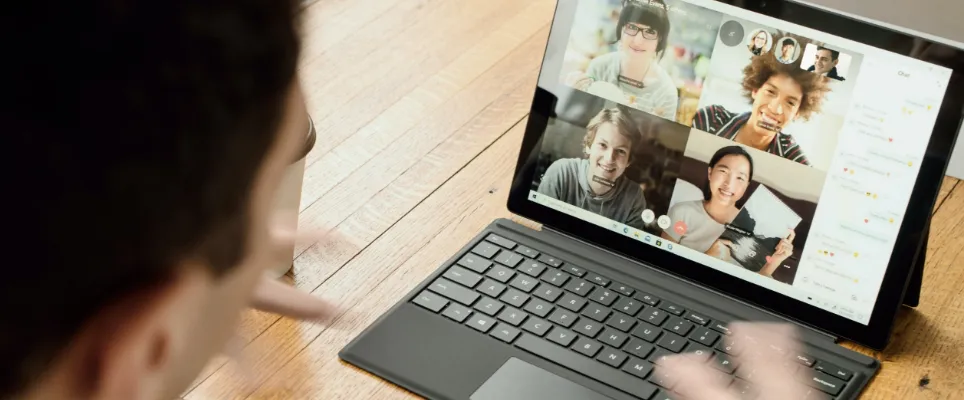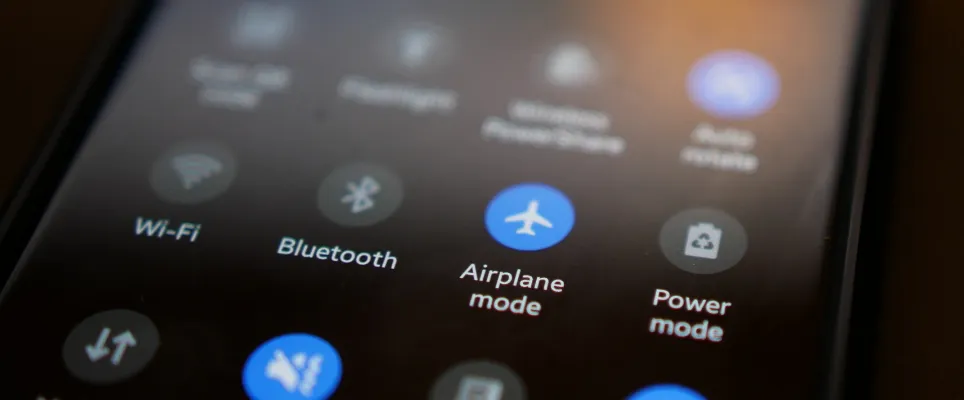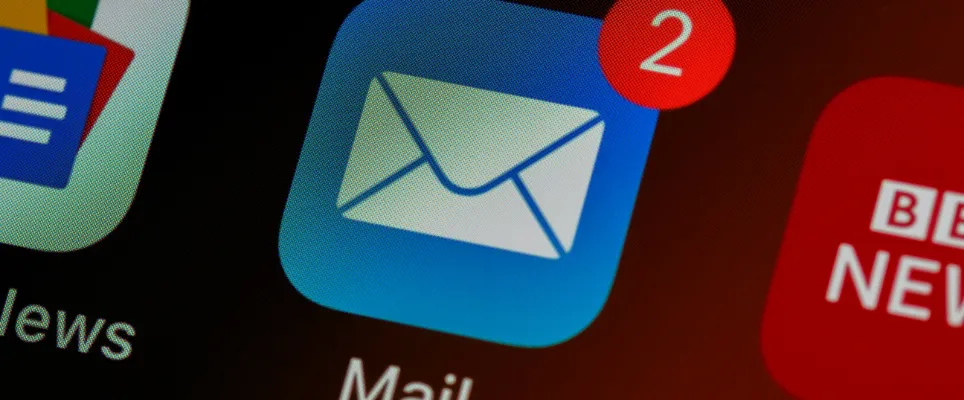
Do you find yourself getting easily distracted by instant messages or regularly checking your emails for that update you’re waiting for? We waste a surprising amount of time going between tasks as a result of distractions. Not only is it inefficient, but regular alerts and notifications can affect our wellbeing, especially if the lines between work and home get blurred.
In this guide, we look at how this ‘always-on’ workplace culture has crept up on us, and what can be done to maximise your wellbeing by responsibly managing notifications and communications – all while keeping on top of your workload.

Chapter 1
An introduction to workplace communication
Different types of communication
We communicate every day – with our family and friends, colleagues, and strangers. But how, when and where we speak to different people varies depending on a number of factors.
At work, you may make a choice between arranging a video call with a client or sending them an email. In your personal life, you might send your friend a voice note to catch up on your week or wait until you meet up in person at the weekend. All of these differences will impact the way you communicate.
It can help to break down the types of communication you’re likely to experience by the channel you’re using, and the style in which you need to communicate:

In the workplace, you will experience a number of different types of communication. It could be remote video calls with your team, emails from other departments, or formal face-to-face meetings. Even that glance across the office from a colleague would be considered non-verbal communication.
By non-verbal, we’re referring to the physical postures and gestures which go alongside what you say, the tone and pace of your voice, and the overall attitude with which you communicate. Non-verbal cues can be subtle yet powerful, but they aren’t present every time you communicate. In fact, a lot of workplace communication lacks non-verbal cues – for example, emails and phone calls.
Communication can also be either:
Synchronous
Communication which happens in real time e.g. video conferencing
Asynchronous
Communication when there is a time between something being said and it being received e.g. an email
As you can see, there’s a lot more to communication that you may initially think.
In any workplace, effective communication is essential. Employees need to be able to communicate with each other in order to exchange information and ideas, collaborate on projects, and resolve conflict. Good communication also helps to build relationships and create a positive work environment.
Yet all too often we make important communication decisions under pressure. We’re dealing with lots of notifications and alerts all fighting for our attention and we don’t always take care over what we’re saying. What’s more, professional matters are often conducted via phone, text chat and other forms of communication where nonverbal context clues are lost.
Using high-quality, face-to-face video conferencing technology helps, but doesn’t always guarantee that nonverbal communication is maintained. Trying to maximise effective communication – especially when expectations can really vary between companies – is something all employees should be working on.
The impact of remote work
The way we work has changed dramatically in recent years, with more people finding that they can do their jobs from anywhere in the world. In September 2021, half of British workers (50%) were still working from home at least some of the time, up from 37% before the pandemic, according to YouGov data.
An even higher number (60%) would prefer to work remotely always or some of the time if they could choose. While this flexibility has many benefits, it can also have a negative impact on effective communication.
When team members are spread out across different time zones, it can be difficult to schedule video conferences or phone calls. And even when everyone is online at the same time, there can be lag times or internet connection issues that make real-time conversations difficult. Remote communication can sometimes feel less personal than in-person interactions, which can make it harder to build trust and connection. It can be hard to build rapport with someone when you’ve never met face-to-face.
As a result, many remote teams have found that they need to be more intentional about communication to help ensure that everyone is on the same page, making an effort to be clear and concise.
In September 2021
50%
Up from 37% pre-pandemic
Still working from home
60%
Would prefer flexible work

Chapter 2
How notifications and alerts can affect workplace wellbeing
What is workplace wellbeing?
Workplace wellbeing is an area of employee health that is gaining more and more attention from businesses. And there’s a good reason for this: happier, healthier employees are more productive, have more energy and are absent less.
But what exactly is workplace wellbeing? Workplace wellbeing is all about creating a healthy and supportive environment for employees. This includes:
Physical health
(e.g. ergonomic workplace design)
Mental health
(e.g. stress management programmes)
Social health
(e.g. team building activities)
By investing in workplace wellbeing, businesses can create a happier, healthier workforce that is more engaged and productive.
There are many ways to promote workplace wellbeing, such as offering flexible work hours, providing access to wellness programs, and creating a supportive work environment. By making small changes, businesses can create a big impact on the health and happiness of their employees.
One of the key components of workplace wellbeing is effective communication. When employees feel like they’re able to openly communicate with their colleagues and supervisors, they’re more likely to be engaged and productive. On the other hand, if communication is ineffective across a company, it can lead to a disjointed operation and results in a lack of team cohesiveness.
Effective communication can also help to prevent misunderstandings and conflict. When employees feel like their voices are being heard, they’re more likely to be satisfied with their jobs and less likely to experience burnout. As a result, promoting effective communication is essential for ensuring workplace wellbeing.
The problems of an ‘always-on’ culture
In recent years, there has been a shift towards an ‘always-on’ workplace culture, where employees may be expected to be available at all hours of the day. While this might increase productivity in the short term, it can also lead to a number of problems in the long run.
It can be difficult to maintain a healthy work-life balance when you’re always on call – whether you’ve explicitly been told you need to be available or it’s just a feeling, based on what other employees do or other pressures.
Rarely switching off from your work can lead to burnout and resentment towards your job. It can create a feeling of constant pressure and stress, which can lead to mistakes and accidents, and makes it incredibly difficult to relax and recharge.
But a surprising number of us are putting in extra hours at work. According to research, employees working from home were putting in an extra two and a half hours in the average working day during the pandemic in the United Kingdom, Austria, Canada and the United States.
Exploring the impact of additional work in a new report ‘Embracing the Age of Ambiguity’, Aviva discovered:
- Half of employees say they never fully switch off from work
- Majority of young adults regularly check emails outside of working hours
- More than a quarter agree that they are neglecting their physical and mental health due to being busy at work
While the stresses of working during a global pandemic would’ve impacted these figures, ‘presenteeism’ has always been a factor in workplaces. Presenteeism is when you turn up for work even when you feel emotionally or physically unable to do your job. The pressure of needing to work means individuals, despite being potentially unwell, still try and get work done. Unsurprisingly, they often end up less productive, only getting the bare minimum done and not getting the rest they needed. After all, more work doesn’t equal better performance – switching off pays off.
Now, when home and work have been merged into the same location for many people, there can be even more pressure to always be doing something. Whether that’s working while you’re unwell or working long hours, the ambiguity around home working, according to Aviva, "is compounding behaviour that is detrimental to long-term employee wellbeing."
Some countries have sought to tackle the problem of overworking by introducing firm boundaries. Known as the right to disconnect, it sets clear guidelines for employees and employers. Workers aren’t expected to manage work calls and emails outside of working hours. Many versions of the right also make it a requirement that employees cannot be punished for following this rule.
Countries which have legislation related to the right to disconnect or similar equivalents include:

France (introduced in 2016)

Italy

Spain

Ireland

Slovakia

The Philippines

Now, when home and work have been merged into the same location for many people, there can be even more pressure to always be doing something.
How alerts and notifications affect us
In today’s fast-paced, always-connected world, it’s no surprise that workplace notifications have become a staple of our daily lives. From emails and calendar reminders to Slack messages and project updates, we’re constantly being pinged with new information – and it can be tough to stay on top of it all.
While workplace notifications can be helpful in keeping us organised and on track, they also have a negative impact on our productivity and wellbeing. Constant notifications can contribute to the feeling you need to be available and ready to work at a moment’s notice.
As well as potentially contributing to rising stress levels, alerts can result in decreased focus and concentration. In fact, the average professional spends 28% of the work day reading and answering emails, according to a McKinsey analysis. Going into our inbox isn’t the only way we tend to check what’s coming in either – many of us have notifications that emerge in the corner of their computer screens.
There’s a cost to all of these interruptions. Researcher Sophie Leroy from the University of Washington tells Harvard Business Review (HBR) what happens:

As I am still thinking about Task A while trying to do Task B, I don’t have the cognitive capacity to process those two tasks at the same time and do a perfect job on both.
HBR discusses various studies which outline just how long it can take you to re-focus on a task following a distraction – from 64 seconds to a potential 23 minutes and 15 seconds to fully recover after an interruption. That’s a lot of time for simply checking an email.
By now it should be no surprise to people who use devices: they are designed to attract and keep our attention. But knowing that doesn’t stop you from feeling overwhelmed by the never-ending stream of alerts. There’s a lot that goes on inside our bodies which contributes to the way we can feel about notifications and other alerts involved with screen usage.
Electronic devices (and the notifications they alert us with) stimulate parts of our brains, as well as release chemicals or hormones. This includes:
By now it should be no surprise to people who use devices: they are designed to attract and keep our attention.
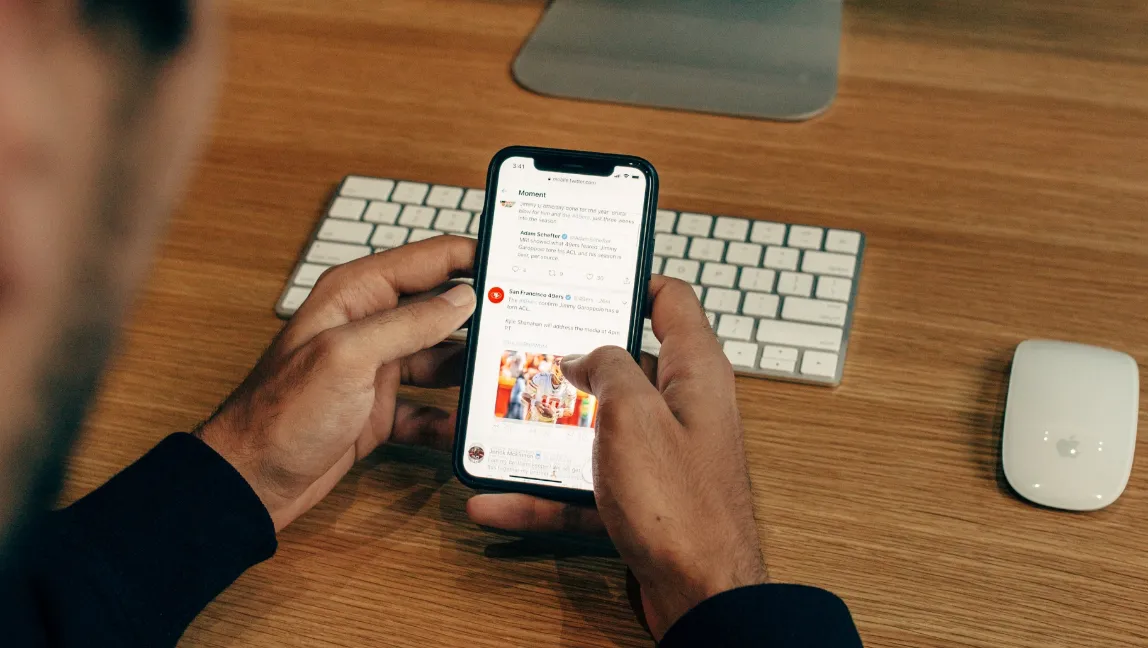
Oxytocin
Neuroeconomist Paul Zak says oxytocin is also "primarily a molecule of social connection", describing it as the "social glue" that binds people together and fosters trust.
But how is this relevant to our screen use? Well, oxytocin is triggered when we interact with others. Zak has conducted studies that show tweeting triggers the hormone.

Your brain interpreted tweeting as if you were directly interacting with people you cared about or had empathy for,
Zak told the reporter who volunteered to be a test subject.

E-connection is processed in the brain like an in-person connection.
Posting a photo, messaging people or even replying to an email – it can all give a feeling similar to interacting with people in person.
It all seems to stem from our desire to be liked or appreciated by other humans. Before the speed of technology, getting addicted or overly drawn to this would be pretty difficult because you just wouldn’t be able to regularly meet and interact with so many people.
With social media you get what writer David Gillespie calls "approval porn", by posting something and getting instant feedback. The ease, high frequency and repetition of this is what makes it potentially addictive.
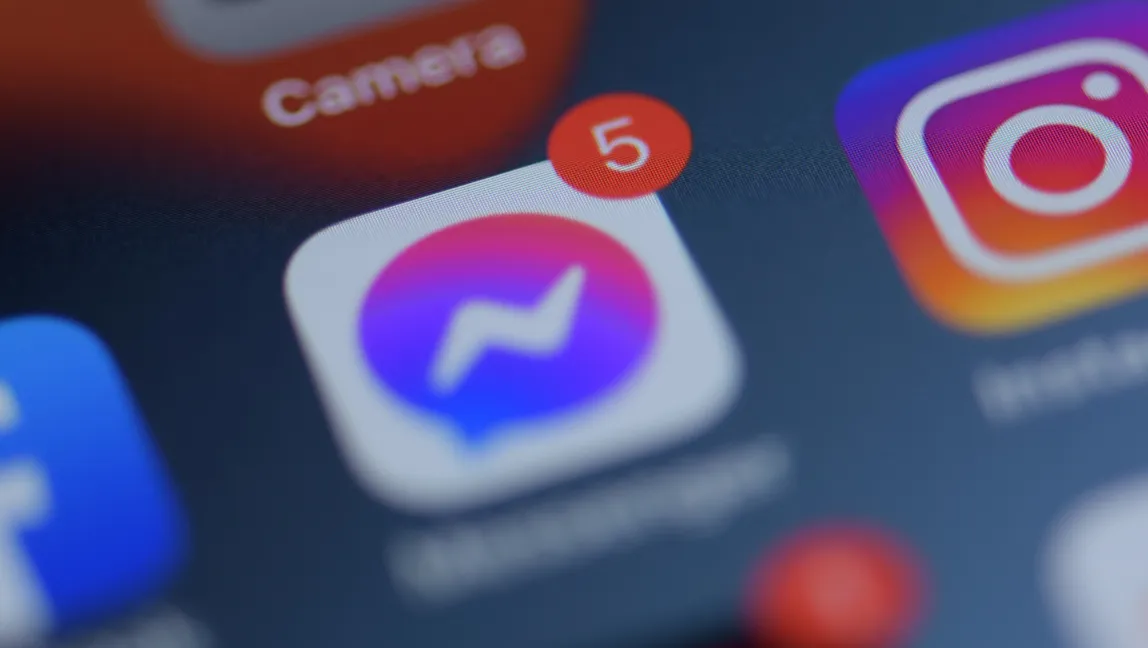
It all seems to stem from our desire to be liked or appreciated by other humans.
Dopamine
In an evolutionary context, dopamine would have rewarded us for beneficial behaviours, motivating us to repeat them. For example, it’s released when we exercise, eat, have sex, or socialise. Many positive social stimuli will result in dopamine being released – almost like a reward. It reinforces the behaviour that preceded it, which includes interaction over any screen.
Our mobiles provide almost an unlimited amount of social interaction. Text messages, likes and comments, even work notifications – they all have the potential to release dopamine.
There are four major pathways in the brain responsible for releasing and carrying dopamine, the hormone which is so heavily involved in our repeated interaction with devices. They’re known as reward pathways and, interestingly, have been shown to be dysfunctional in most cases of addiction.
Our mobiles provide almost an unlimited amount of social interaction. Text messages, likes and comments, even work notifications – they all have the potential to release dopamine.
Cortisol
Cortisol is known as the ‘fight-or-flight’ hormone, which lets you know when you’re in potential danger. But if you’re the type of person who regularly checks your phone, putting it down can trigger a release of cortisol. According to Psychologist Larry Rosen, California State University Dominguez Hills, who is researching the link between cortisol and mobile devices, that’s because we don’t have an alert or notification every time we check our phones, so our brain starts to wonder about checking. To get rid of the anxious feeling that cortisol gives you, you pick up your phone to see if anything has happened.

When you put the phone down you don’t shut off your brain, you just put the phone down,
says Larry Rosen. The effects of using our devices and staring at screens don’t stop when we stop.
With this hormone-driven behaviour and reward loop, it can feel like the odds are stacked against us. Apps will take advantage of this to keep us coming back for me. Sometimes we even know something isn’t making us feel good, but we can’t stop ourselves.
To get rid of the anxious feeling that cortisol gives you, you pick up your phone to see if anything has happened.
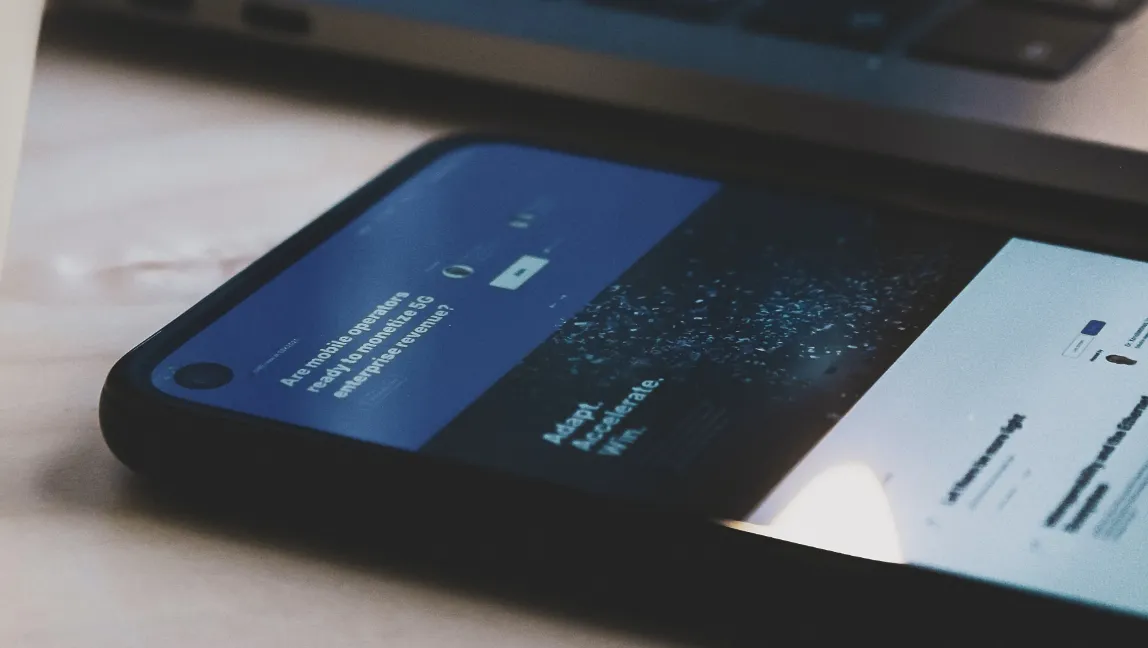
Tristan Harris, a former Google product manager, was one of the first tech insiders to publicly acknowledge how deliberate it is that our devices get our attention. It’s all in the programming.

There’s always this narrative that technology’s neutral. And it’s up to us to choose how we use it. This is just not true,
Harris said in an early interview.
It’s easy to dismiss this as something which happens outside of work, but think about the tools you use during your working day to communicate – whether that’s an email, call, or instant message. It’s likely you’re getting regular notifications designed to get your attention.
What’s more, apps are continually working on ways to keep our attention. When we use them, we’re essentially part of a controlled set of experiments – we are tested on and our behaviour is monitored. The companies behind these apps have vast amounts of data on us and can make predictions on how we’re going to use our devices. But why? Well, it’s simple. For social media apps like LinkedIn, we’re not the main customer. It’s paid for by advertisers – and that’s why we get to use it for free. Our attention is what’s being sold.
It’s easy to dismiss this as something which happens outside of work, but think about the tools you use during your working day to communicate
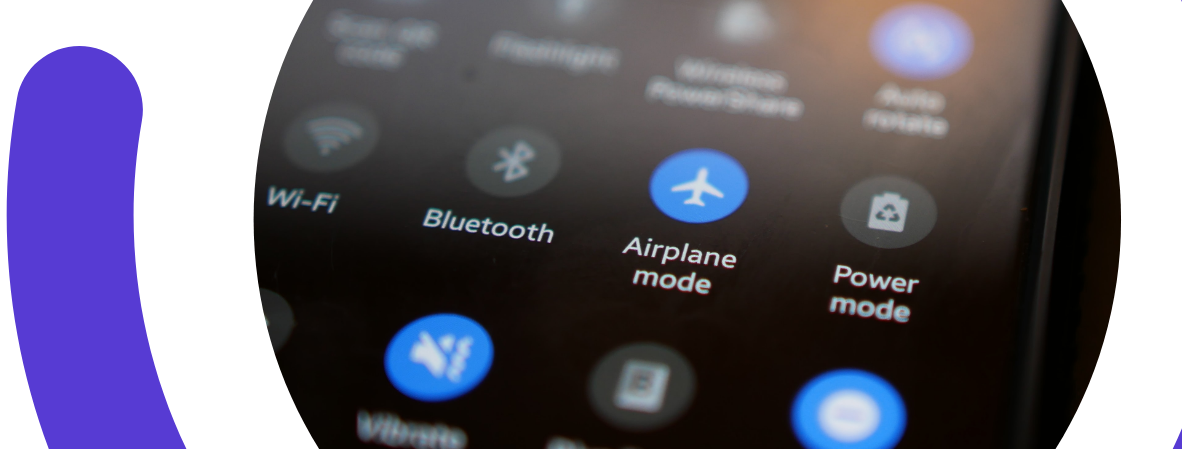
Chapter 3
How to manage communication
Communicating within appropriate boundaries
If you decide to take a break from social media, that’s a personal choice. If you’re usually slow to return your friend’s phone calls, again that’s a decision for you to make.
But at work, you’re expected to communicate. If you don’t fulfil certain elements of your role, you may find your behaviour being questioned or challenged.
You have to find a way to communicate within appropriate boundaries – in a way that suits you, allowing you to have a productive day at work without feeling like you’re fighting off a stream of notifications demanding your attention. Here is some advice:
Know what’s expected of you
This will vary between companies and even departments. Some of it will depend on your role. For example, a customer-facing job may involve a lot more in-person communication than an accounts role. The important thing is that as an employee you know what’s expected from you in terms of communications.
It’s helpful to define which communication methods will be used – when and for what purposes. For example, you may prioritise phone calls for urgent issues, emails for anything that require more detail, and an instant messenger (like Slack or Workplace) for general chatting. The other thing that’s useful to clarify is the expectations around response times. It should be rare to need to answer immediately.
Some companies will establish these expectations themselves ( Buffer has ground rules on when to use Slack or not ), but if not, you can start the conversation about why it’s so important.
Don’t check your alerts when you’re on holiday
As we’ve discussed, you need time off to be productive at work. Rest is important. And you won’t be able to fully switch off from work if you have alerts on. All it takes is a distracting email or a message to pop up and you’ll be thinking about work when you should be switching off.
If you think that’s unreasonable or are struggling, talk to someone
It’s natural to feel uncomfortable with setting boundaries. At work we tend to allow others to dictate how we manage our time. But if you feel like the communication expectations are unreasonable, you need to talk to someone about it. Don’t be shy about reminding others about any agreements in place. This will encourage them to protect their schedule, too.
Share your communication preferences widely
It’s important to find ways to communicate when you are (and are not) available – for example, by outlining your usual working hours on a synced company calendar, making use of different statuses on instant messengers or including upcoming holiday on your email signature. The more others seem to be doing something, the more likely other people are to think that thing is right or normal.
The importance of leaders setting the right example
All managers need to set the right example about work-life balance and effective communications in order to ensure their team is productive. If a manager is constantly working long hours and never taking a break, his or her team is likely to do the same.
When we overwork ourselves, we’re essentially running on empty. We’re pushing ourselves beyond our limits, and it’s not sustainable. Eventually, we hit a wall. We get tired, our productivity suffers, and we just can’t keep going. This is what people refer to as ‘burnout.’
Burnout can have a serious impact on our mental and physical health. It’s important to take breaks, rest, and recharge when we’re feeling overwhelmed or stressed. Otherwise, we risk running ourselves into the ground. When we do, it’s hard to bounce back. So if you’re feeling overwhelmed at work, make sure to take a step back and reevaluate your priorities. Seeing those in positions of influence do the same can be incredibly powerful.
Think about it. If a manager is always checking his or her phone or email during meetings or meals, this sends the message that work is more important than anything else. Instead, managers should strive to model healthy work-life balance and effective communication. Ways managers can set the right example include:
Taking breaks
Communicating during working hours
Putting away devices during downtime
Being proactive about setting aside time for their personal life
If you’re in a managerial position, just remember to ask yourself whether you really need to send that email over the weekend or can send it for the following week? Scheduling your communication sends a clear message you prioritise other people’s downtime. When team members see that their manager is taking care of themselves, they’re more likely to do the same.

Burnout can have a serious impact on our mental and physical health. It’s important to take breaks, rest, and recharge
Tips and tricks for maintaining your focus
In today’s fast-paced work environment, it’s more important than ever to maintain your focus. With constant distractions from email, social media, and colleagues, it can be easy to lose track of what you’re supposed to be doing.
However, there are several good reasons to stay focused on the task at hand. For one thing, it’s simply more efficient to complete one task before moving on to the next. Not only that, but staying focused can help to prevent mistakes and increase the quality of your work. When you’re able to give your full attention to a task, you’re more likely to catch small details that you might otherwise miss. Additionally, staying focused can help you to remain calm and avoid feeling overwhelmed by your workload.
So next time you find yourself getting distracted, take a deep breath and remind yourself of why it’s so important to stay on task. Try these tips for maintaining your focus:
Try greyscale
In our modern world, we’re constantly bombarded with notifications from our phones, computers, and other devices. Whether it’s a new email, a text message, or a social media update, these constant interruptions can be extremely distracting. One way to help reduce the impact of notifications is to use greyscale mode on your devices. When everything is displayed in shades of grey, it becomes much less attention-grabbing. As a result, you’re less likely to feel the need to check your phone every time it buzzes. Additionally, greyscale can help to reduce eye strain and fatigue.
Reduce the number of screens around you
If you want to stay focused while working, one of the best things you can do is put your phone away. Having your phone within reach can be a major distraction, so put it in another room or turn it off altogether. This way, you won’t be tempted to check it every few minutes and can instead focus on your task.
Pause or mute notifications
Did you know the average worker is interrupted somewhere between four to 12 times every hour? In the best case scenario, that’s being interrupted every 15 minutes. And as we’ve already discussed it can take over 20 minutes to get back on track.
That adds up to a lot of wasted time. Not to mention, all of those interruptions can be hugely disruptive to your workflow. If you’re looking for a way to increase your focus and productivity at work, muting your notifications may be the answer. By silencing your email, text, and social media alerts, you can eliminate distractions and better utilise your time. What’s more, you’ll be less likely to make mistakes when you’re not trying to juggle multiple tasks at once. So if you’re ready to boost your productivity, start by hitting the mute button.
Try timeboxing
Timeboxing is a powerful way of managing your time. You essentially block out periods of time to work on different things. It’s a way of protecting your own time to do what you need to. Whether that’s time for deep thinking, research, personal development or working on client pitches – it’s up to you. What’s important is that you’ll block this time out in your calendar in a meaningful way. Describing what you’re doing will help to prevent others from trying to steal your time as it’s clear what you’re working on.
Have a clear start and end to your day
It’s important to have a clear start and end to your working day for a number of reasons. First, it helps you to stay focused on your work and avoid burnout. If you know that you have a specific amount of time to complete your tasks, you can work more efficiently and avoid wasting time.
Secondly, it allows you to enjoy your personal time more fully. When you know you have a set time for work, you can relax and enjoy your free time without worrying about unfinished business. If you have set hours for work, you can more easily make time for family, friends, and other important aspects of your life. Similarly, with time set aside for leisure activities and relaxation, it’s easier to enjoy those activities without feeling guilty or anxious.
Our home and professional lives should work together. A happy life won’t make you enjoy a job you hate – and a great job cannot compensate for an unhappy life. In order to maximise our own workplace wellbeing, we need to learn to switch off without feeling guilty or checking for the latest notification.
Chapter 4
Useful links & Resources
FOMO vs info: managing notification overload
Effective Notification Management in a Workplace of Distraction
Stop Letting Push Notifications Ruin Your Productivity
How to promote wellbeing and tackle the causes of work-related mental health problems
Working safely with display screen equipment
How You Can Better Manage Notifications
The Always-On Culture Is Harming Your Company - Why It Needs to Go



